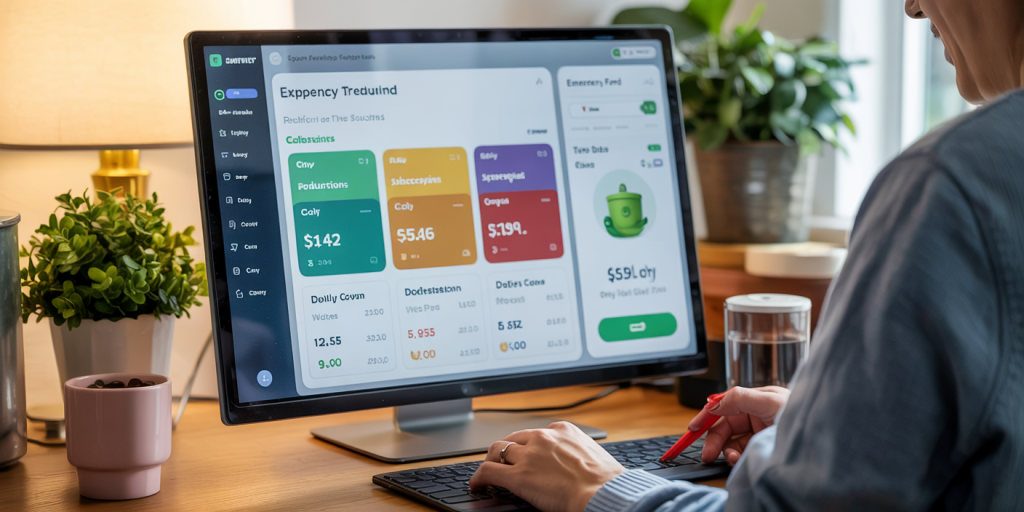5 Strategies to Increase Your Monthly Savings Rate
Increasing your monthly savings rate is a fundamental step toward financial security and long-term wealth accumulation. However, many individuals struggle to consistently set aside a significant portion of their income due to everyday expenses, lifestyle habits, or lack of financial planning. By adopting targeted strategies, you can systematically improve your savings behavior and ensure a healthier financial future.
The reality is that saving money isn’t merely about how much you earn; it’s about how effectively you manage your resources. According to a report by the Federal Reserve, over 40% of Americans would struggle to cover a $400 emergency expense, highlighting the urgent need for better savings habits. Understanding and implementing effective savings techniques can bridge this gap, regardless of income level. The following sections explore five actionable strategies designed to boost your monthly savings rate.
1. Automate Your Savings to Eliminate Manual Barriers
One of the most effective ways to increase your monthly savings rate is to automate it. Manually transferring money to savings accounts often falls prey to procrastination or forgetfulness. Automation ensures that a fixed amount of money is moved to your savings automatically each month, helping you save consistently without even thinking about it.
For example, many banks and financial service providers now offer options to set up automatic transfers on specific dates. This can be aligned with your salary deposit, so as soon as your paycheck arrives, a predetermined percentage immediately moves to your savings account. Take the case of Sarah, a marketing executive who struggled to save until she automated a $500 transfer every month. Despite her previous attempt of manual savings failing, automation helped her accumulate $6,000 in just one year without altering her spending habits drastically.

Data from a 2022 survey by NerdWallet indicates that individuals using automated savings plans save on average 30% more each month compared to those who save manually. Automated saving not only reduces friction but also helps inculcate disciplined financial behavior that contributes to a sustainable increase in your savings rate over time.
2. Track Expenses Rigorously and Cut Non-Essential Spending
Before you can increase your savings, you need clear insight into your current spending behavior. Tracking expenses rigorously is a proven strategy for identifying unnecessary expenditures and redirecting that money into savings. Many people underestimate how small daily expenses accumulate, eroding their saving potential.
Use digital tools such as budgeting apps (e.g., Mint, YNAB) or simple spreadsheets to gain a detailed picture of where your money goes every month. For instance, John, a software engineer, discovered through his expense tracking that he was spending over $200 monthly on multiple streaming subscriptions and daily coffee purchases. By canceling unused subscriptions and brewing coffee at home, he was able to reroute these savings to his emergency fund.

Here is a comparative example of monthly discretionary spending before and after expense tracking and reduction:
| Expense Category | Before ($) | After ($) | Monthly Savings ($) |
|---|---|---|---|
| Streaming Subscriptions | 80 | 30 | 50 |
| Daily Coffee | 120 | 30 | 90 |
| Dining Out | 150 | 100 | 50 |
| Total | 350 | 160 | 190 |
Reducing discretionary spending by $190 could increase one’s savings rate significantly, particularly if these savings are consistently redirected to savings or investment accounts.
3. Increase Income Streams to Boost Savings Capacity
While cutting expenses is important, increasing your income is equally vital when aiming to improve your monthly savings rate. Many individuals focus solely on expense reduction but overlook the potential of side income streams. Diversifying your income sources not only provides additional cash to save but also enhances financial resilience.
Consider the example of Maria, a graphic designer who started freelancing on weekends and earned an extra $600 per month. Instead of spending this additional income, she directed it entirely to her savings account, effectively increasing her monthly savings by 25%. Remote gig economy options, such as freelance writing, virtual tutoring, or even selling handcrafted goods online, are accessible to many and can be structured around existing commitments.

According to a 2023 report by Upwork, 36% of the U.S. workforce engages in freelance or gig work, with nearly half of freelancers citing additional income as their main motivation. By integrating side hustles that fit your skills and time availability, you can unlock opportunities that raise your overall savings potential more rapidly.
4. Optimize Debt Management to Free Up Cash Flow
Outstanding debt obligations significantly restrict your ability to save monthly. Interest payments on credit cards, personal loans, or other forms of debt absorb a large portion of your income if not managed properly. Optimizing debt management reduces interest burdens and frees up cash that can be diverted toward savings.
The first step is to prioritize high-interest debt for early repayment. For example, credit card debt often carries annual percentage rates (APRs) exceeding 15%, which makes it financially sensible to tackle that debt before lower-interest loans. Consider the case of Alex, who owed $10,000 on credit cards at 18% APR, as well as a $15,000 auto loan at 6%. By funneling extra payments toward credit cards, he eliminated that debt within a year, saving approximately $1,500 in interest, which subsequently increased his monthly savings capacity.
Many borrowers can also benefit from debt consolidation or refinancing to reduce monthly payments. According to the National Foundation for Credit Counseling, borrowers who consolidate debt often reduce monthly payments by 10-30%, depending on interest rate differences and payment schedules. This improved cash flow can be redirected to savings or emergency funds.
| Debt Type | Balance ($) | Interest Rate (%) | Monthly Payment ($) | Optimized Payment ($) | Savings in Monthly Payment ($) |
|---|---|---|---|---|---|
| Credit Card Debt | 10,000 | 18 | 300 | 150 | 150 |
| Auto Loan | 15,000 | 6 | 350 | 350 | 0 |
| Total | 25,000 | – | 650 | 500 | 150 |
Effectively managing debt repayment prioritization allows you to free up substantial monthly funds for accelerated saving.
5. Leverage High-Yield Savings and Investment Accounts
Simply saving money is not enough; how you save matters. Parking your funds in accounts with minimal or zero interest undermines long-term savings growth. Leveraging high-yield savings accounts or low-risk investment vehicles can compound your savings and contribute to a higher effective savings rate.
For instance, traditional savings accounts may offer interest rates well below 0.10%, whereas many online high-yield savings options currently offer rates between 3% to 4% APY (annual percentage yield). If you save $500 per month, the difference in interest accumulation after one year can be tangible.
| Account Type | Interest Rate (APY) | Interest Earned on $6,000 (1 year) |
|---|---|---|
| Traditional Savings Account | 0.05% | $3 |
| High-Yield Online Savings | 3.50% | $210 |
| Conservative Mutual Funds | ~5% (variable) | $300+ (variable) |
For example, Michelle, a young professional, reallocated much of her emergency fund to a high-yield online savings account. Over the course of 12 months, her account earned over $200 in interest compared to less than $5 in her previous bank. Furthermore, with balanced mutual funds or exchange-traded funds (ETFs), individuals can access higher returns while maintaining relatively low risk. This approach not only preserves capital but leverages compounding returns, gradually increasing the effective savings rate without increasing monthly contributions.
Future Perspectives: Sustaining and Growing Your Savings Rate
Increasing your monthly savings rate is a powerful financial habit, but sustaining and growing it over time requires ongoing adaptation and mindfulness. The financial landscape is dynamic, influenced by inflation, changing income levels, and evolving personal goals. Continuous financial education, periodic review of budgets, and reassessment of saving strategies ensure that your saving efforts remain effective.
Forward-looking savers should also consider the impact of technological developments such as AI-driven budgeting tools and robo-advisors that personalize investment strategies and optimize savings growth. Additionally, as incomes rise, it’s essential to incrementally increase the percentage of savings to avoid lifestyle inflation—a common pitfall where increased earnings lead to proportional increases in spending. Historical data from the Bureau of Labor Statistics indicates that households boosting their savings rate by even 1-2% annually can significantly improve their net worth over time.
Establishing a disciplined savings plan now, combined with leveraging emerging tools and strategies, can build an increasing savings velocity. This path leads not only to greater financial security but also to the ability to seize investment opportunities, manage financial shocks, and achieve long-term life goals such as homeownership, retirement, and wealth legacy.
In summary, by automating savings, rigorously tracking expenses, increasing income streams, optimizing debt management, and leveraging high-yield savings accounts, you can materially increase your monthly savings rate. Through sustained effort and strategic adaptation, your enhanced savings will compound, driving you closer to your financial ambitions. Implementing these strategies today lays the foundation for a resilient and prosperous financial future.
